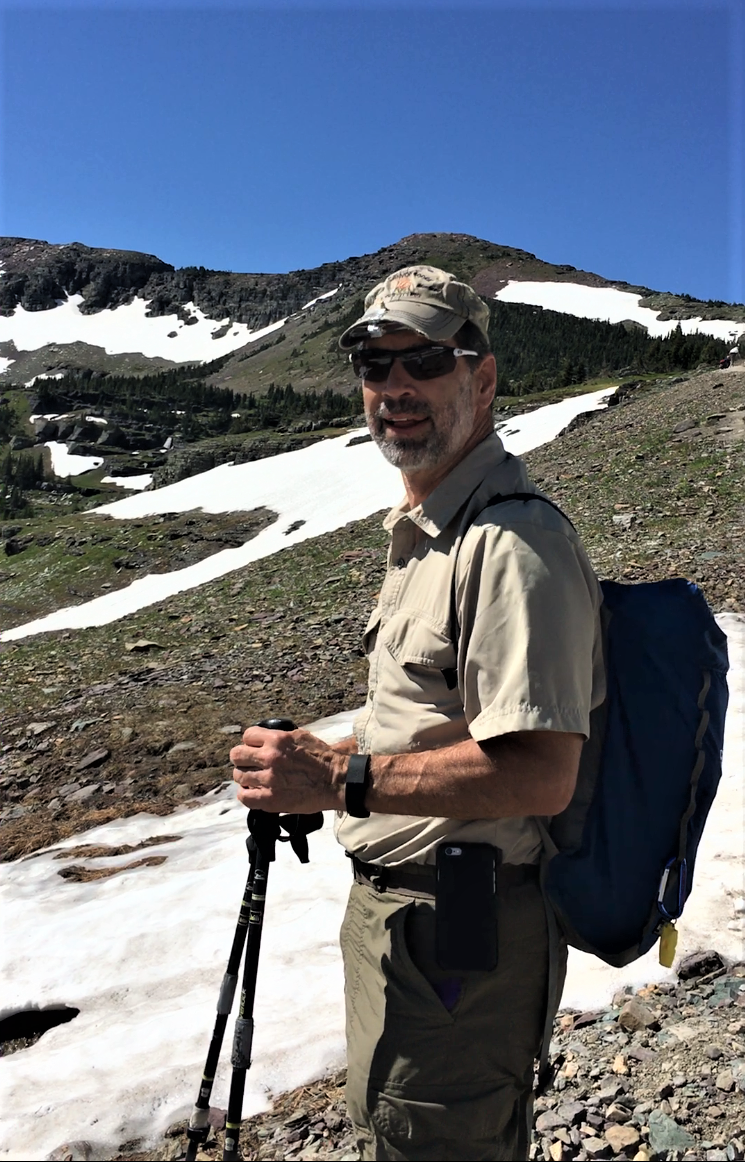Let it Snow
By Paul Smith
In my lifetime, changes in snow seasons have been such a clear indicator of climate change. I remember three-foot snows yearly in southern Ohio, sledding, snow days from school from December through March, backyard hockey rinks, and the whole gamut of winter activities. We had neither the money nor the impetus for “self-indulgent” hobbies such as skiing so I hadn’t skied until attending medical school in Missouri. On scholarship and working summers I had sufficient funds and friends to experience my first ski trip. A van full of classmates and I drove all night to Colorado to ski for Thanksgiving break. We stopped at a Goodwill so I could get a winter coat and used ski pants. I rented straight-edged skis, was taken to the top of the bunny hill, shown how to parallel turn, and told that if I wanted to slow down, just turn. Then they left me for the day. I didn’t imagine I would ever get to do that again so I skied non-stop, all day except for a quick break for a beer and a sandwich. The end result was a case of altitude sickness and an enduring love for snow-capped mountains.
Fast forward 45 years and the differences in winters are stark. This year, most ski slopes in the west delayed their openings by several weeks. Some ski areas have closed permanently. This year only two ski areas in Montana were open by mid- December. In the book, Undaunted Courage, author Stephen Ambrose talks about the Lewis and Clark expedition being unable to get through the Bitterroot Mountains in June because of six-foot deep snow that the men and horses couldn’t get through. I can’t imagine that now. Interestingly, the snow-sports industry has become active in climate change advocacy with organizations such as Protect Our Winters (POW) and “Give A Flake”. No doubt they have seen the loss of revenue and know it will get worse. Many resorts advertise their conservation efforts and “greening” of the industry though it’s hard to imagine that resorts will ever have negligible carbon footprint.
Personally, being jaded by the glitz and prices of ski resorts, I’ve moved to backcountry and cross country skiing. At my age, I prefer going uphill to downhill. Still, here it is nearly the New Year and I’m not sure there is enough snow to bother getting the skinny skis out for a jaunt to my local trails. I recognize that the pleasure of my winter activities is a minor inconvenience and nothing compared to the effects climate change is having on agriculture, fish, forests, and wildlife that depend on snowpack all year for survival. As a pediatrician, father and grandfather, much more concerning to me are the effects of climate change on the health of children. Wildfires, climate-related forced migration, conflict and food shortages are a partial list of climate related events already killing children.
I do not believe my children or grandchildren will have snow memories that I have. I have much greater fear for their future health and the world we will hand them. How different things would be if we made children’s health the fulcrum for our decision making. Our decisions and choices can make a difference but it needs to be now. Our children’s futures and our planet’s life depend on massive change in governmental policies and public attitude.
—
Paul Smith is a pediatric pulmonologist in Missoula. He is a clinical professor at the University of Washington and adjunct research professor at the University of Montana, and is the Director of the Montana Pediatric Clinical Trials Network under the Environmental Influences On Childhood Health Outcomes (ECHO) program funded by the NIH. Dr. Smith also served on the board of Montana Health Professionals for a Healthy Climate in 2019.
As Montana health professionals and health organizations, we work together because the climate crisis threatens the health and future of Montanans, including our communities, our resources, and animals. We declare our commitment to addressing climate change as a public health issue.


